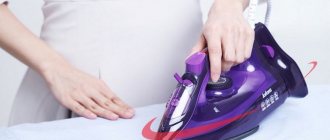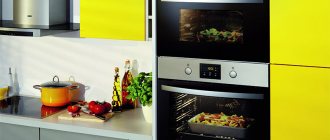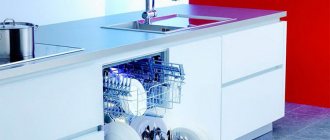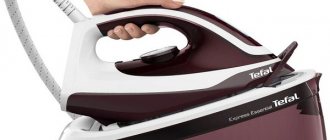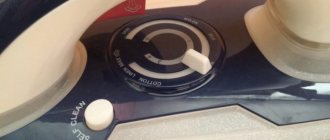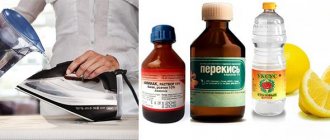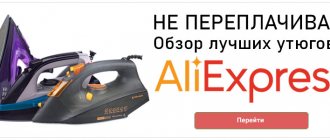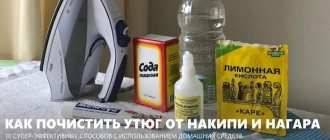- Tefal GV8461
Steam generating systems with irons are quite expensive and bulky devices. Before buying an iron with a steam generator (hereinafter also referred to as a steam station, ironing system) for home use, you need to weigh the pros and cons.
When choosing a device in a store, you should first of all take into account that the performance of the ironing system is much higher than that of a steam iron with a built-in steam generator
Device Features
It would be a mistake to believe that an iron with a steam generator is a modified model of a regular iron. In fact, it is a completely different device. A regular iron without a water boiler may have a steam function and even a “steam boost” mode, but its capabilities are still limited and its power is much less.
A steam generator with an iron for the home is a more efficient ironing device, especially if the volume of items is large. The device consists of two parts:
- Boiler. This is a reservoir with a volume of one liter into which water is poured. Thanks to the large capacity, you can iron without interruption for more than an hour and a half. The operating time depends on the dimensions of the boiler. The water from it is converted into dry steam, due to which the fabric is smoothed.
- Iron. This device is lighter than traditional models. The fact is that smoothing occurs not due to the pressure of the mass of the device on the fabric, but due to the action of steam. It has additional functions such as vertical steaming and steam boost. The iron is connected to the boiler by a flexible tube through which steam is supplied to it. This may seem inconvenient at first, but the productivity of the device quickly makes you forget about it.
The peculiarity of the device is that things can be ironed without using an ironing board. In just half a minute you can put any item in order without removing it from its hanger.
Operating principle. Before ironing, you need to fill the boiler with regular water, and then plug in the gadget. You can start working after about 10 minutes, when the steam generator has warmed up. Also during this time, the pressure necessary to produce steam is built into the boiler. It is thanks to pressure that wrinkles on clothes are smoothed out.
The convenience of using a steam generator with an iron is that you can iron things on only one side. The power of the device allows you to quickly remove wrinkles without turning the product over. So, the duvet cover can be folded several times and ironed on only one side. The device can also be used as a regular iron.
Pros and cons of a steam generator
Advantages:
- The iron in a steam generator is lighter than a regular one with steam due to the fact that the water tank is located separately.
- Smoothes the roughest fabrics.
- Vertical or horizontal ironing - your choice.
- By filling the reservoir with water once, you can iron a large amount of laundry.
Flaws:
- It’s an expensive pleasure, but many housewives believe that it’s better to spend money and buy a steam generator for a home with a large family than a regular iron.
- Large due to the water tank, it is difficult to carry and store.
- Noisy, as steam under pressure makes a sound similar to hissing.
- You have to additionally purchase replacement cartridges for the tank and distilled water.
Functions
Before choosing a steam generator with an iron for your home, you need to study the basic and additional functions of this device.
- The main function is to iron any type of fabric. Ironing time is reduced by approximately half.
- Vertical steaming. Allows you to iron clothes directly on a hanger or in any other position. No need to use an ironing board.
- One of the useful additional functions is cleaning the upholstery and covers of upholstered furniture. A powerful jet of steam effectively removes stains and even stubborn odors.
The device is sold complete with special attachments. You can clean thin fabrics in a gentle way. The hard bristle attachment allows you to clean and smooth out rough, thick material, such as removing wrinkles from outerwear. A nozzle with a thin “spout” helps clean out wrinkles that cannot be reached with other devices.
What to choose, a steam generator or a steamer
Many people doubt whether it is better to choose a steam generator or a steamer. To do this, you should know the operating features of each device.
A steam generator is necessary if:
- you constantly iron a large number of things;
- Ironing speed is important to you;
- you work with thin and delicate fabrics: synthetics, silk, etc.
A steam generator differs from a steamer in its operating principle: steam is generated in a special container, from where it exits through a tube. This allows you to iron fabric much better and faster with minimal effort.
However, in some cases it will be wiser to purchase a steamer:
- if you have a lot of clothes with small details;
- It is necessary not only to iron things, but also to eliminate unpleasant odors;
- you iron products made from capricious and delicate fabrics: silk, wool, etc.
A steamer will quickly remove any wrinkles on any type of fabric. It will become an indispensable tool for ateliers and those who do professional sewing.
Characteristics
To understand how to choose the right iron with a steam generator, you need to know what to look for when purchasing it.
- Tank volume. This characteristic affects the continuous operation time of the steam generator. For a small family, a boiler with a volume of 1.6 liters is enough - it is enough for about half an hour of ironing. For a large family, especially with small children, a boiler with a capacity of up to 5 liters is recommended. The ability to add water during operation is not provided in every model, which is why it is better to immediately provide a large boiler volume.
- Steam pressure. Steam supply in irons with a steam generator is carried out in two ways: constant and short-term, the so-called “steam boost”. For home use, you should choose models where the constant steam supply is 120 g per minute.
- Iron sole. The iron that comes with the steam generator can also be used in the traditional way. That is, you can iron things not only with steam, but also using the surface of the iron. In this case, the material of the sole is very important, since it is in direct contact with the fabric.
- Aluminum. The cheapest material. Its advantage is that the metal quickly heats up and cools down. But the sole can stick to the fabric and leave marks on it. A device with an aluminum base can be found extremely rarely.
- Stainless steel. Steel is much heavier than aluminum, but it is easier to clean and will definitely not damage the item if used correctly. It is easy to clean when dirty.
- Ceramics. It has a lot of advantages: it heats up quickly and cools down just as quickly, it glides easily over the fabric, and does not stick to the material. But the ceramic coating is fragile; such an iron cannot be dropped; also, a chip or crack may form on the ceramic sole if it touches a sharp or hard part on the clothing.
- Teflon. It is also smooth, easy to glide and heats up quickly. But the Teflon sole is easy to scratch, which will immediately affect the quality of ironing.
Many steam generator irons designed for sewing or other professional use include removable soleplates. One is more suitable for delicate fabrics, the other for ironing or steaming curtains, the third for outerwear, etc.
- Device power. The higher this indicator, the faster the device heats up. Household models are available with a power of up to 3200 Watts, the optimal option is 2000 Watts.
Advantages and disadvantages of steam-generating systems for ironing
To understand whether a steam generator with an electric iron is needed in your home, you need to know all the strengths and weaknesses of this household appliance. Only then will it be possible to make the right decision and choose the appropriate model. The advantages of steam-generating ironing systems include the following:
- High power, allowing you to quickly and efficiently smooth fabrics.
- Lower moisture content of steam compared to what steam irons produce. This improves the quality and processing speed of fabric fibers.
- Steam penetrates deeply into the fabric due to its high temperature, more than +100 ℃, and is able to straighten any textile material.
- Steam is supplied with great intensity. Steam generators are capable of supplying it under pressure, unlike steam irons.
- Large fluid reservoir capacity. Thanks to this, you can iron things for a long time without adding water.
- Possibility of vertical steaming of any fabrics, including thick ones from which outerwear is made.
- The iron is light weight, making it easier to work with.
An iron with a steam generator will quickly and efficiently iron thick denim, workwear and other items.
Steam generating systems also have a number of disadvantages:
- large dimensions and total weight;
- the need to purchase a specially designed ironing board along with the steam generator;
- noise made during operation;
- high price.
One of the main disadvantages of powerful ironing systems is their bulkiness, which limits the possibilities of their movement and storage.
Advantages compared to iron
If we compare an iron with a steam generator and a regular iron, the first one significantly wins in terms of functionality. A traditional ironing device smoothes out creases by making contact with the fabric. Things become smooth due to the pressure of the mass of the device. Yes, these models also have a “steam” function, but in this case the steam is intended to slightly moisten the surface of the fabric to simplify the process.
An iron with a steam generator works differently: smoothing is carried out by exposure to dry steam. Its advantages:
- High productivity due to high ironing speed.
- The sole does not come into contact with the surface of the fabric. Which contributes to a longer service life of things.
- The high temperature dries the steam so that it does not leave marks on clothing. No scale is formed.
If you have small children in your home, then an iron with a steam generator will additionally disinfect the baby’s household items, and there will be no need for boiling.
Which iron sole material is better?
The materials and alloys from which the working surfaces of electric irons are made differ in durability, glide quality and thermal conductivity. Budget ironing systems are produced with aluminum soles. The material has two positive qualities: lightness and high thermal conductivity, due to which an iron with such a surface heats up quickly.
Iron with an aluminum work surface, on which scratches are clearly visible
The disadvantages include the softness of aluminum, as well as the fact that the fibers of delicate fabrics burn to it. Metal objects leave scratches on its surface, which can further damage the structure of the material. In recent years, aluminum has been coated with stronger alloys to increase its service life.
Stainless steel is another budget material for the working surfaces of irons. Stainless steel is much stronger than aluminum, but takes longer to heat up due to lower thermal conductivity. In addition, steel is heavier and prone to burning if the ironing setting is not set correctly. At the same time, the polished surface glides well over fabrics. This material is used in combination with other coatings.
Electric iron with shiny polished stainless steel soleplate
Teflon (polytetrafluoroethylene) is a fairly common polymer that is used to make non-stick cookware and irons. Its advantages include good glide and no burning when in contact with delicate materials. Unfortunately, this material does not have strength; it quickly wears out and gets scratched.
Grunhelm steam iron with Teflon sole
Ceramics, glass and metal ceramics are the best materials in terms of price/quality ratio. These coatings, in combination with aluminum and stainless steel, form durable work surfaces. The only disadvantage of ceramics is their fragility, due to which chips can form on the surface. But ceramic alloys with metal and glass do not have this disadvantage.
Glass-ceramic SteamGlide sole in a Philips iron
In addition to the above materials, expensive steam-generating systems today use titanium and sapphire coatings for irons. They are also durable.
Advantages compared to a steam generator
If we compare an iron with a steam generator and a conventional steam generator, the first one also wins. The fact is that a regular steamer is not always able to cope with tasks such as creases on trousers or folds on a pleated skirt. In this case, the usual ironing method will be more convenient.
An iron with a steam generator is multifunctional; it combines the advantages of both devices. The cost of a steam generator with and without an iron is different, but it is still more profitable to buy one device rather than two separately.
If you combine the purchase with an ironing board, you will have a complete ironing system in your home.
Device maintenance
Both the iron and the steam generator require regular maintenance (as recommended by the manufacturer) to keep the device in good condition and suitable for use.
Iron maintenance
Periodically it is necessary:
- Clean the soles. To do this, you need to turn on the iron and switch it to medium or maximum heat. And then treat the sole with a special cloth (acts as an abrasive element) or with a cleaning pencil (it reacts chemically with carbon deposits without damaging the metal base).
- Clean the steam system. In some iron models, this function is provided by the manufacturer itself. You only need to fill the tank with water, turn on maximum heat, and then press the “clean” button while holding the device over the sink. If such functionality is not provided, then for cleaning it is recommended to use a citric acid solution (1 teaspoon per 100 milliliters). Pour it into the tank, turn on the maximum heat, and then use the steam boost button to empty the container (holding the iron over the sink).
After using the iron, it must also be allowed to cool for 5 - 10 minutes and only after that can it be moved to its permanent storage location.
Maintenance is recommended after every 5th use.
Steam generator maintenance
To maintain steam generators, it is necessary to periodically:
- Clean the water level sensor. How to remove it is to be clarified in the technical instructions (the procedure varies somewhat depending on the model). Next, the sensor is visually inspected for contamination (limescale deposits) and damage to the insulation. Clean only with non-metallic brushes. Float-type sensors (common in steam generators produced before 2010) must be cleaned using reagents (you can use a citric acid solution).
- Clean the container from scale. Manufacturers recommend using a weak soap solution or special reagents for removing limestone deposits for these purposes. The same applies to the working nozzle, where the nozzles are located. An unconcentrated solution of citric acid can also be used. But you shouldn’t add a product to the water to reduce its hardness - this technique is not compatible with it.
In summary, if there are no budget restrictions, then it is definitely recommended to buy a steam generator. It has wider functionality, irons clothes and fabrics more delicately, and can be used without an ironing board. Its average service life is 5 years with regular use (2 – 3 times a week).
Popular models
It is difficult to choose the best iron with a steam generator; comfort and ease of use are individual parameters. Reviews of different manufacturers allow us to make a rating of the most popular brands.
- Philips. This is the leader in sales of irons with a steam generator. The most popular models are 9620 and 8650/80. The devices are lightweight, easy to use, and self-clean when scale occurs. The sole of both options is made of steel with metal-ceramic and titanium coating. The boiler capacity is 1.8 liters, pressure 6.5 bar, and has an auto shut-off function.
- Tefal. The popular models in the manufacturer’s assortment are GV 5245, GV 7760, GV 8975. The sole coating is cermet; during use, you can add water to the tank; there are a lot of additional functions. A minor drawback is its impressive weight: this iron weighs 5.5 kg.
- Braun. Models IS 5043 WH, IS 5044 BK. Boiler volume – 1.5 liters, steam pressure – 6 bar, iron sole – aluminum. The devices have useful additional functions.
- Bosch. The iron with a laundry steam generator of this well-known brand has a 1.3 liter tank, a 2 m long steam pipe, a cermet soleplate, and a maximum pressure of 5.5 Bar. The “stop-drip” function prevents condensation from forming when cooling.
- Kercher. Model 1801 is lightweight, small in size and durable. The steam tube is 2.5 meters long, the tank volume is 1 liter, the power is 2000 Watt.
Which steam iron is best to choose depends on your needs.
For those who are always in a hurry, it is important to pay attention to the time it takes for the device to heat up to operating condition. For those who use the device in the morning, when everyone is sleeping, a reduced noise level will be important. A device for an atelier should be more powerful than one for domestic use. And if you are into sewing, be sure to pay attention to the number of attachments for different types of fabric. back to all articles
Operating principle of steam generators
Modern models of steam generators operate from the mains, are quite compact in size and have powerful multi-level protection against overheating. The device has automatic water supply, self-diagnosis and auto-drain functions.
The steam generator works on the principle of transforming water into steam streams. Moisture enters the working chamber, where it is heated and then turns into a gaseous state. Water can be heated under the influence of current, a heating element or through induction. Streams of steam go into a copper pipe, then through special holes they are supplied out.
The design of the steam generator includes:
- a heating element;
- working chamber;
- nozzles;
- water boiler.
The process is fully automated; you just need to set the desired operating mode on the digital panel.
Choosing a steam generator for a car
When purchasing a steam generator for a car, consider the following characteristics:
- volume of water tank: the larger this indicator, the higher the level of productivity;
- power of tubular electric heater;
- the ability to control the level of humidity: will allow you to set the appropriate parameters for each surface of the car separately;
- steam pressure: the ideal value for cleaning the machine is 6-8 atm.
The functionality and safety of the device are also important: a set of nozzles for different surfaces and shapes, water level indication, etc.
Professional steam generator
When choosing a professional steam generator, it is important to pay attention to the body material. The most reliable devices are made of metal (stainless steel is best). For professional use, do not consider plastic models: not designed for high loads, they break quickly.
You must also remember about the high power of steam pressure: this will allow you to process even large surfaces in seconds. It is desirable that the device has a vertical steam function for working with curtains or capricious clothes that cannot be ironed with a regular iron.
Steam generators for studio
Steam generators with even a small fill volume - 2 - 2.5 liters - are suitable for work in the studio. At the same time, keep in mind that you need to pour slightly less water into the container than the declared volume. Please note the following features:
- A special stand for mounting the device.
- Sound or light indication of the water level in the container.
- The steam generator should be light and mobile, easy to carry.
It is advisable that the heating element be located on the surface, behind the boiler: this design is more reliable and reduces the risk of heater failure.
Steam generators for phyto-barrels
When choosing a steam generator for generating steam in a phyto-barrel, proceed from the following parameters:
- Small size of the device for convenient use even in a small room.
- Minimum level of energy consumption.
- Sufficient level of power to convert water into healing steam from herbal collection.
To increase steam saturation during heating, various herbs are added to the container, so the self-cleaning system must be built into the steam generator.
How to choose the right electric heater with a steam generator
When buying an electric heater with a steam generator, it is better to take models with a corner, central or wall design. The case must be made of stainless steel or zirconium enamel. You can also choose a paint coating, but these steam generators cost more due to the additional heat-resistant layer.
If the liquid used in the bath contains a lot of calcium salts, purchase a device with an enameled matte finish.
Steam generator for hammam: equipment power requirements
A steam generator for a hammam must meet two main criteria:
- Heating type. Conventionally, several groups are distinguished: gas, diesel, induction and electrode devices.
- Power. Choose a device taking into account the size of the steam room and the manufacturer’s standards. For rooms with an area of 3 to 6 m3, a steam generator with a power of up to 6 kW is sufficient, from 6 to 10 m3 - 9 kW, from 9 to 12 - 12 kW.
Electrode and gas models are valued due to their ease of installation and low energy consumption.
